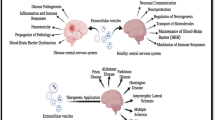Abstract
Purpose. Brain-derived neurotrophic factor (BDNF) was modified by carboxyl-directed protein pegylation in order to both retain biologic activity of the neurotrophin and reduce the rate of systemic clearance of this cationic protein in vivo. Since the modification of surface lysine residues of neurotrophins results in loss of biologic activity, the present studies examine the feasibility of placing polyethyleneglycol (PEG) polymers on carboxyl residues of surface glutamate or aspartate residues of BDNF.
Methods. PEG molecules with terminal hydrazide (Hz) moieties of molecular weight 2,000 (PEG2000-Hz) or 5,000 (PEG5000-Hz) Daltons were coupled to BDNF carboxyls using carbodiimide.
Results. The systemic clearances of the BDNF-PEG2000 and BDNF-PEG5000 were reduced 67% and 91%, respectively, compared to unconjugated BDNF. The brain volume of distribution (VD) of BDNF-PEG5000 was not significantly different from the cerebral plasma volume. Cell survival studies and TrkB auto-phosphorylation assays showed that the biologic activity of BDNF was not changed following pegylation with PEG2000, and was minimally impaired following pegylation with PEG5000.
Conclusions. These experiments describe the first carboxyl-directed pegylation of a neuropeptide, and show this formulation substantially reduces the systemic distribution and elimination of the neurotrophic factor. The biologic activity of the neurotrophin is retained with carboxyl-directed pegylation.
Similar content being viewed by others
REFERENCES
J. Leibrock, F. Lottspeich, A. Hohn, M. Hofer, B. Hengerer, P. Masiakowski, H. Thoenen, and Y.-A. Barde. Nature. 341:149–152 (1989).
C. Hyman, M. Hofer, Y.-A. Barde, M. Juhasz, G. D. Yancopoulos, S. P. Squinto, and R. M. Lindsay. Nature. 350:230–232 (1991).
M. B. Spina, S. P. Squinto, J. Miller, R. M. Lindsay, and C. Hyman. J Neurochem. 59:99–106 (1992).
W. M. Pardridge, Y.-S. Kang, and J. L. Buciak. Pharm. Res. 11:738–746 (1994).
W. M. Pardridge. Adv. Drug Del. Rev. 15:109–146 (1995).
W. M. Pardridge, J. Eisenberg, and J. Yang. Metabolism. 36:892–895 (1987).
J. B. Fishman, J. B. Rubin, J. V. Handrahan, J. R. Connor, and R. E. Fine. J. Neurosci. Res. 18:299–304 (1987).
S. Skarlatos, T. Yoshikawa, and W. M. Pardridge. Brain Res. 683:164–171 (1995).
A. W. Jefferies, M. R. Brandon, A. F. Williams and S. V. Hunt. Immunol. 54:333–341 (1985).
M. J. Knauf, D. P. Bell, P. Hirtzer, Z.-P. Luo, J. D. Young, and N. V. Katre. J. Biol. Chem. 263:15064–15070 (1988).
R. Clark, K. Olson, G. Fuh, M. Marian, D. Mortensen, G. Teshima, S. Chang, H. Chu, et al. J. Biol. Chem. 271:21969–21977 (1996).
Y. Tsutsumi, T. Kihira, S. Tsunoda, H. Kamada, S. Nakagawa, Y. Kaneda, T. Kanamori, and T. Mayumi. J. Pharmacol. Exp. Ther. 278:1006–1011 (1996).
M. B. Rosenberg, E. Hawrot, and X. O. Breakefield. J. Neurochem. 46:641–648 (1986).
D. K. Pattit, T. P. Bonnert, J. Eisenman, S. Srinivasan, R. Paxton, C. Beers, D. Lynch, B. Miller, et al. J. Biol. Chem. 272:2312–2318 (1997).
L. O. Narhi, R. Rosenfeld, J. Talvenheimo, S. J. Prestrelski, T. Arakawa, J. W. Lary, C. G. Kolvenbach, R. Hecht, et al. J. Biol. Chem. 268:13309–13317 (1993).
T. Arakawa, M. Haniu, L. O. Narhi, J. A. Miller, J. Talvenheimo, J. S. Philo, H. T. Chute, C. Matheson, et al. J. Biol. Chem. 269:27833–27839 (1994).
P. S. DiStefano, B. Friedman, C. Radziejewski, C. Alexander, P. Boland, C. M. Schick, R. M. Lindsay, and S. J. Wiegand. Neuron. 8:983–993 (1992).
R. Rosenfeld, J. S. Philo, M. Haniu, K. Stoney, M. F. Rohde, G.-M. Wu, L. O. Narhi, C. Wong,et al. Protein Science. 2:1664–1674 (1993).
D. J. Glass, S. H. Nye, P. Hantzopoulos, M. J. Macchi, S. P. Squinto, M. Goldfarb, and G. D. Yancopoulos. Cell. 66:405–413 (1991).
E. I. Christensen, H. G. Rennke, and F. A. Carone. Am. J. Physiol. 244:F436–F441 (1983).
W. A. Banks, A. J. Kastin, and C. M. Barrera. Pharm. Res. 8:1345–1350 (1991).
R. H. Fabian, and C. E. Hulsebosch. Brain Res. 611:46–52 (1993).
J. F. Poduslo and G. L. Curran. J. Neurochem 67:734–741 (1996).
S. Zalipsky. Bioconj. Chem. 6:150–165 (1995).
S. M. Chamow, T. P. Kogan, M. Venuti, T. Gadek, R. J. Harris, D. H. Peers, J. Mordenti, S. Shak, and A. Ashkenazi. Bioconj. Chem. 5:133–140 (1994).
J. Huwyler, D. Wu, and W. M. Pardridge. Proc. Natl. Acad. Sci. USA 93:14164–14169 (1996).
Author information
Authors and Affiliations
Corresponding author
Rights and permissions
About this article
Cite this article
Sakane, T., Pardridge, W.M. Carboxyl-directed Pegylation of Brain-derived Neurotrophic Factor Markedly Reduces Systemic Clearance with Minimal Loss of Biologic Activity. Pharm Res 14, 1085–1091 (1997). https://doi.org/10.1023/A:1012117815460
Issue Date:
DOI: https://doi.org/10.1023/A:1012117815460




